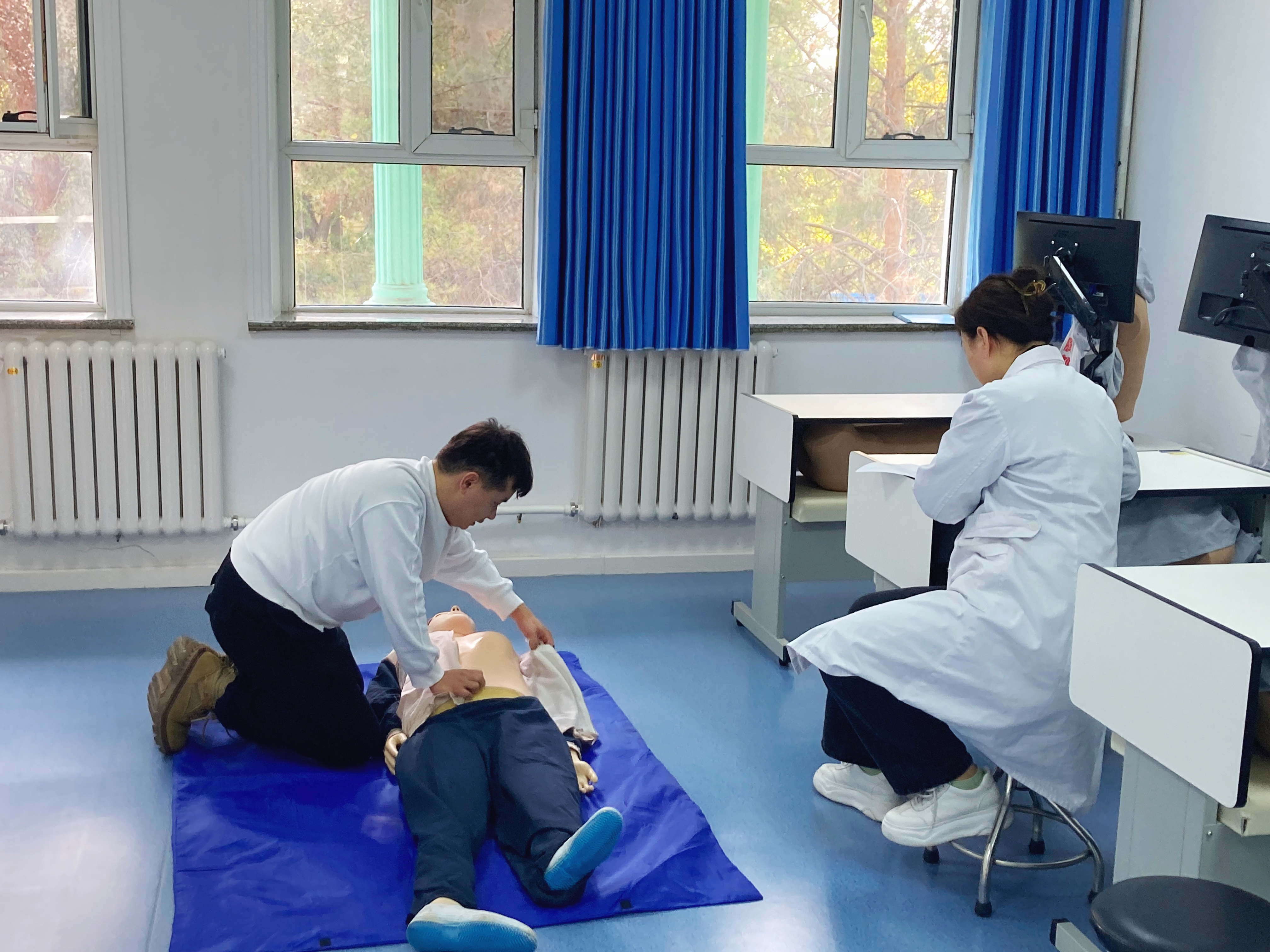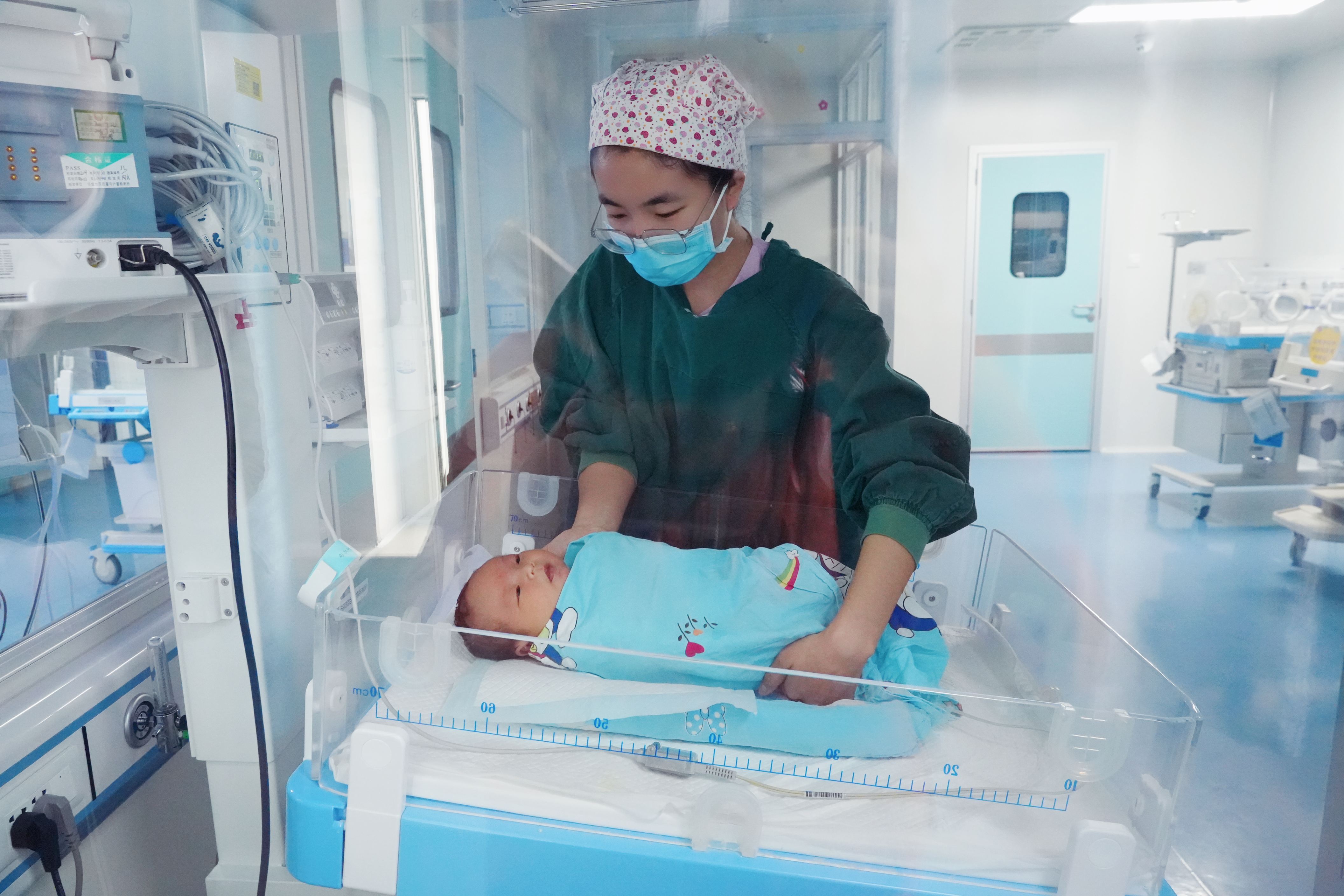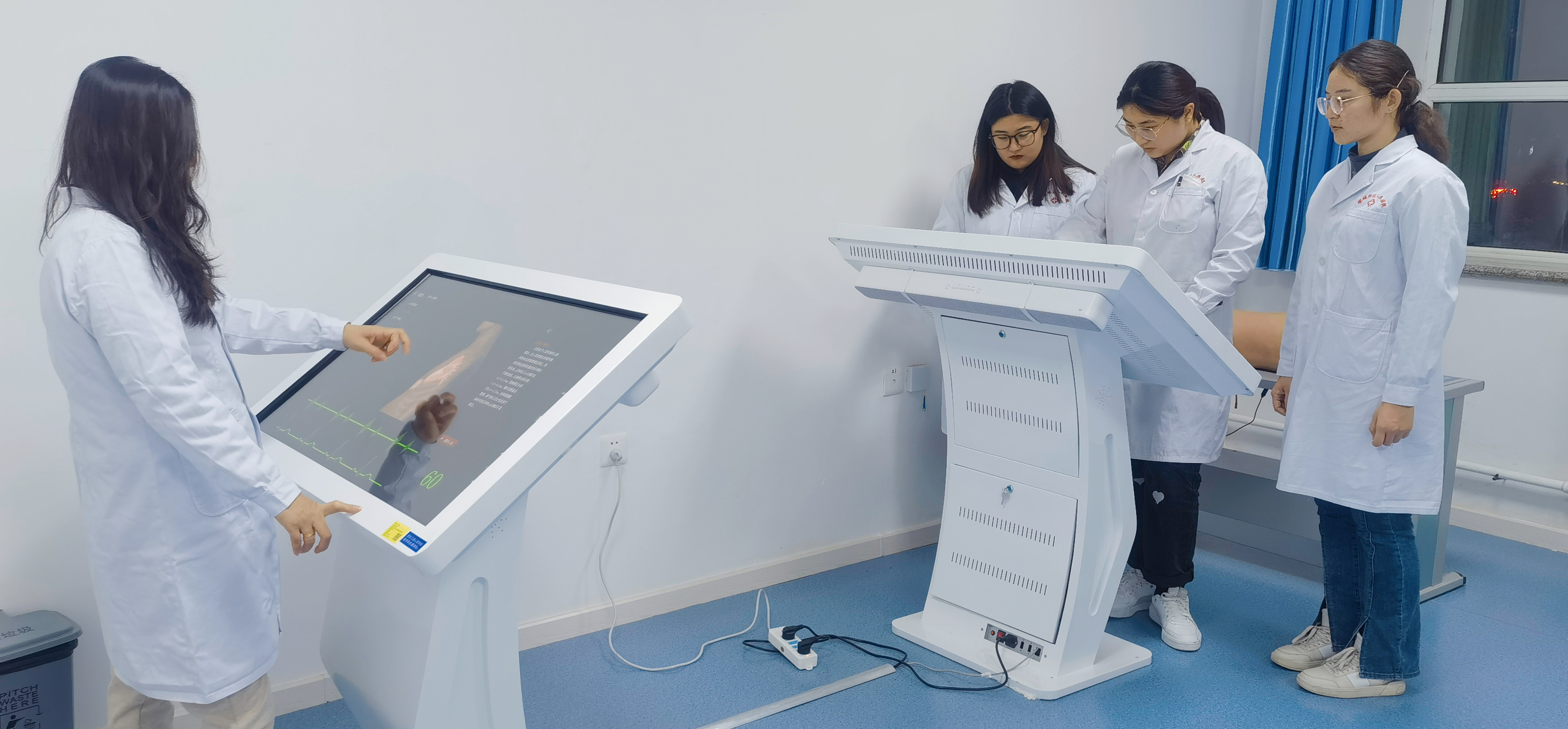Pairing Assistance Provides 'Backbone' to Protect People's Health in Xinjiang

Resident doctors practice their abilities at the standardized training base in People's Hospital of Tacheng Prefecture. (Photo provided by Huang Hui to S&T Daily)
By CHEN Chunyou
In Tacheng of northwest China's Xinjiang Uygur autonomous region, you can hear the Dongbei dialect spoken extensively. Usually, it is heard in the northeastern provinces such as Liaoning, Jilin and Heilongjiang, so people visiting Tacheng for the first time often wonder if they are in Xinjiang or in the northeast.
The reason for Dongbei dialect's omnipresence in Tacheng goes back to 2010, when Liaoning was entrusted with supporting Tacheng's development. Since then, many people from Liaoning have been going to Tacheng to work and some have also settled down there. They have left their mark on sectors like manufacturing, education and healthcare.
Since 2016, the China Medical University (CMU) based in Liaoning's Shenyang city has sent more than 160 doctors to work in the Tacheng People's Hospital. They have brought new treatment and management ideas, technologies and experience and promoted medical exchanges.
Tacheng's residents prefer to see a doctor on Wednesdays because that's when the Liaoning doctors observe an open day, making themselves available for consultations. The locals regard the Liaoning doctors as good doctors, especially for problems like cardiovascular diseases.
The Liaoning doctors have also filled the technology gap in the treatment of new-born babies.
Chen Dan, who came from CMU in May 2023, now heads the department of neonatology at the Tacheng People's Hospital. She said many newborns face birth problems like suffocation and newborns with different symptoms need different kinds of ventilators.
In the past, newborns were treated in the pediatrics department. In November 2020, the hospital established its neonatology department, the first of its kind in Tacheng.

A neonatal nurse takes care of the new-born baby in People's Hospital of Tacheng Prefecture. (Photo provided by Dai Jiaomei to S&T Daily)
Guided by the Liaoning doctors, the doctors in the neonatology department have learned how to use ventilators and how to resuscitate asphyxiated babies. It has improved their emergency treatment skills and helped lower the risk of infant mortality in the hospital.
With the help of the Liaoning doctors, the hospital has also established the first standardized training base for resident doctors in Xinjiang to improve their research and practice abilities. The teaching equipment has also been upgraded.
"In the past, while teaching, the lecturers played taped symptomatic sounds made by patients as well as corresponding sounds made by healthy people. The medical students would listen to the sounds to gauge the symptoms and the differences," said Huang Hui, director of the research and education department. Huang came to Tacheng from Liaoning's Anshan city in 2021.

The virtual 3D cardiac auscultation teaching system offers visual depictions of the heart's anatomy and replicates the sounds of a human heart. Users can interact with the virtual heart on a computer screen and get an immersive learning experience. (Photo provided by Huang Hui to S&T Daily)
In 2018, the hospital introduced a virtual 3D cardiac auscultation teaching system. Now the students can discern between the sounds a healthy heart, lungs and other organs make as well as the sounds made by patients much more easily and vividly.
Huang said this year, the hospital recruited 195 trainees from across Tacheng, including new graduates and doctors with work experience. They will receive free training for three years during which the hospital will offer them accommodation.
"The hospital has cultivated a group of doctors who have become the backbone of rural clinics, guarding people's health across Tacheng," she added.






